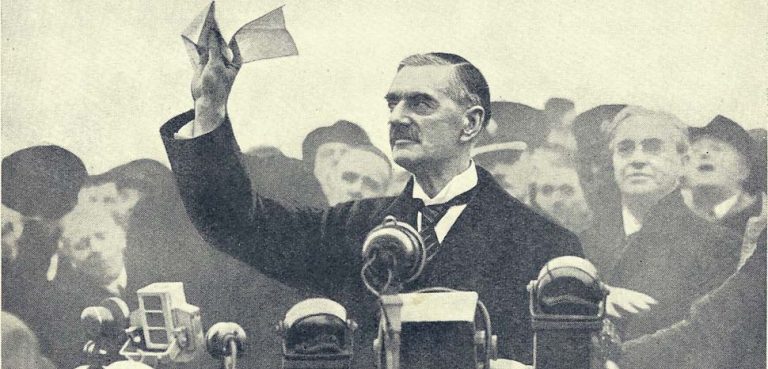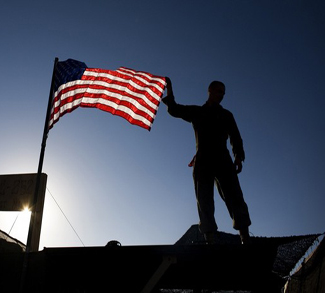Central Asia has become a key region in light of the Ukraine war. A number of external actors –the United States, Germany, France, Japan, India, Türkiye, among others– have started to engage with the region in various formats to expand their influence. Such evolution intensified competition to win the ‘hearts and minds’ of the Central Asian nations. The main reason for such a development is predicated on the belief that ‘Russia is losing its grip on Central Asia.’ Contrary to this argument, in 2023 various Central Asian nations, excluding Turkmenistan, were designated as ‘Putin’s Pals’ in an article from The Economist, which assessed diplomatic, military, energy, and economic factors. This argument deserves a thorough analysis to assess whether it reflects reality.
Western Arguments on Russia’s Waning Influence
Since the outbreak of the war in Ukraine, various analytical portals have published a significant number of materials arguing that Russia’s influence in Central Asia is declining. These narratives highlight that Central Asian leaders did not support Russia in the conflict and have expressed adherence to the sanctions regime.
Analysts suggest that Russia’s full-scale invasion of Ukraine in February 2022 has significantly altered regional geopolitics, impacting Moscow’s standing in Central Asia. It follows that Central Asian nations have maintained a neutral stance on the Ukraine conflict, refraining from supporting Russia’s actions and choosing to comply with Western sanctions. This neutrality is interpreted as a cautious distancing from Moscow’s policies and reflects a decline in trust among Central Asian states. In response to Russia’s preoccupation with Ukraine, these nations are actively seeking stronger relationships with other global powers such as China, Türkiye, and the West. The shift in alliances is perceived to diminish Moscow’s traditional role as the dominant power in the region, leading to a potential realignment of geopolitical influences.
Such narratives point to a surge in regional cooperation and autonomy among Central Asian republics, independent of Russian influence. Since 2018, initiatives like the Central Asian Summit have fostered collaboration among the five republics without the involvement of external powers, signaling a collective regional identity. Joint military exercises conducted without Russian participation underscore a move towards self-reliance and regional solidarity in defense matters. By adopting diversified foreign policies, Central Asian countries are actively asserting their independence and interests on the global stage, reducing reliance on any single external power.
Economic factors are crucial in the narratives about Russia’s declining influence. Historically reliant on Russia for trade and energy exports, Central Asian economies are now exploring alternative trade routes and partnerships to diversify their economic engagements. China’s growing economic presence through the Belt and Road Initiative offers significant investments and infrastructure development, which are highly attractive to Central Asian countries. Projects like railways, roads, and energy pipelines enhance connectivity and economic growth, reducing dependence on Russian routes. Enhanced trade with China opens new markets for Central Asian goods, diversifying their economic partners. Türkiye is also strengthening economic and cultural relations with Central Asian nations, leveraging shared Turkic heritage. Ankara has intensified economic interactions through trade agreements, investments, and joint ventures, offering alternatives to Russian economic influence. By engaging with China and Türkiye, Central Asian states aim to achieve greater economic independence and resilience against external economic pressures.
The narratives also highlight significant cultural and political changes contributing to the erosion of Russian influence. There is a resurgence of national identities and a reevaluation of historical narratives in Central Asian countries, leading to a gradual cultural distancing from Russia. Educational reforms emphasize local languages over Russian, reinforcing national identity and cultural heritage. Efforts to revive traditional customs and practices reduce the cultural dominance previously held by Russia. A growing critical assessment of Russia’s historical role and Soviet-era policies fuels the desire for decolonization. Intellectuals and the media increasingly discuss the importance of cultural and political independence from Russia. As some media argue, some governments have implemented measures to limit Russian media, promoting local media outlets instead. Demonstrations against Russia’s actions in Ukraine reflect broader societal shifts away from pro-Russian sentiments, and economic hardships attributed to the war have led to public frustration directed at Russia.
Analyses suggest that Russia’s soft power—the ability to influence through cultural or ideological means—is diminishing in Central Asia. With the decline in the popularity of Russian culture and language, Russia’s ability to project soft power weakens. Central Asian students are increasingly choosing to study in China, Türkiye, and Western countries instead of Russia. The educational content is being localized, reducing the emphasis on Russian perspectives. Countries are exploring security cooperation with other nations, such as Türkiye and Western powers, reducing reliance on Russian military support. By engaging with multiple global players, Central Asian states aim to balance Russia’s influence and enhance their sovereignty. Compliance with Western sanctions demonstrates a willingness to prioritize international norms over Russian alliances. Efforts to strengthen internal economies reduce vulnerability to external economic pressures, including those from Russia.
The Ukraine War and Western Misperceptions
The war in Ukraine changed the geopolitical chessboard of Central Asia, impacting the multifaceted and complex nature of the region’s relationship with Moscow. On the one hand, Putin’s war was not supported by the Central Asian nations, let alone recognizing newly-created republics in the annexed territories of Ukraine. On the other hand, trade volume with Moscow has increased considerably since the outset of the war, often leading to re-exports and sanctions evasion. It is taking place at the same time as enhancing trade relations with Europe and other actors. Furthermore, recent developments in the geopolitics of Central Asia include a growing regionalism. Yet this started with the initiative of Uzbekistani leader Shavkat Mirziyoyev to champion regional cooperation and connectivity in 2016. So in this regard, the Ukraine War accelerated close regional cooperation, even including areas of security and defense, as put forward by President Tokayev. Attempts to build a collective regional identity is another trend that intensified after 2022.
In general, the West’s misperception of the region is often connected with two points. The first is underestimating the role of two main actors – Russia and China, inter alia their interests. The second is overestimating their political agenda by overlooking priorities of Central Asian nations. The former denotes that China and Russia have vital political, economic, and security interests in the region that differ in the way of pursuing them. For instance, for China, Central Asia is an abundant source of raw materials for the Chinese economy. While Russia, owing to the Soviet economic legacy, profits from energy cooperation with the region; sometimes, leveraging it as a means to exert economic influence. However, China is gradually becoming a dominant economic power in the region through BRI, narrowing the scope of the Russian-led Eurasian Economic Union (EAEU). In the security domain, Russia enjoys a favorable advantage due to its military presence in some parts of Central Asia. In addition, Kazakhstan, Kyrgyzstan, and Tajikistan remain member states of the Collective Security Treaty Organization (CSTO).
It must also be noted that, at certain times, Western policies cannot produce tangible outcomes due to an inability to make sense of cultural and political contexts. The West’s foreign policy, particularly that of the United States and the EU, has adhered to Manichean principles, lecturing Central Asian countries on governance and framing relationships with other major actors in terms of a struggle between good and evil, democracy versus authoritarianism. This often comes in the form of sanctions and criticism of human rights abuses and democratic deficits by pressuring Central Asian governments to align with Western values. These threats are manifested through engagement in dialogue, trade agreements, and development aid.
It is not simply what President Zelensky described as “… fear of the Kremlin of pro-Russia stance.” It should be noted that Central Asian nations are pursuing multi-vector and reality-based diplomacy, meaning that they are neither supporting Western sanctions nor defying Russia. For this aspect, it is a very important moment for the region to explore new opportunities for partnerships and deviate gradually from the Russian orbit.
Trade Ties and the Russian Economy
Analyzing the trade data illustrates a stark picture, showing that from the onset of the war, both Russia and Central Asia accelerated their economic cooperation with Central Asia. Starting with trade, just in 2023, the total trade volume reached approximately $44 billion, allowing Russia to represent a third of Central Asian’s total trade turnover. In addition, another development is the use of local currencies in mutual settlements has experienced considerable growth. The total volume of Central Asia’s trade operation with Russia with Russia settled in national currencies exceeded 50 percent except for Turkmenistan, which accounted for 24 percent of the total trade. President Putin has frequently stressed the importance of national currencies in intra-regional trade settlements. According to Putin, this provides financial stability and lessens dependence on the US dollar. In the meantime, Russia has actively been seeking to create new trade routes through Central Asia that bypass sanctions. For instance, the Southern corridor or International North-South Transport Corridor (INSTC) would yield advantage to Kyrgyzstan and Uzbekistan. The latter could even eventually address Uzbekistan’s longstanding ‘landlocked problem.’
Moscow maintains effective economic relations with Central Asian countries to evade Western sanctions, leading to considerable growth in regional with European countries, and in turn, with Russia. For instance, Kyrgyzstan and Kazakhstan experienced a colossal increase of export of automobiles and spare parts from Germany, accounting for 5400% and 720%, respectively. Notably, there was an 18 times increase in the amount of electronics exports between Kazakhstan and Russia in the ten months of 2022, amounting to 550 million euros.
More recently, Uzbekistan and Kazakhstan gained partner status in BRICS during the 2024 summit in Kazan. The status will bring a few benefits to these countries, such as alternative payment systems and new export markets.
Russia’s Political and Security Influence
Russia has not only not lost its influence in Central Asia; rather, there are signs that it has significantly strengthened it, particularly in areas such as political and military cooperation. The war in Ukraine and the sanctions imposed on Russia have led to a substantial increase in contacts between Russia’s political and economic elites of Central Asian countries. For instance, in 2023 alone, it is known that almost every second foreign company in Kazakhstan is Russian. Regarding political cooperation, one of the key events was President Putin’s recent visit to Kazakhstan, during which Tokayev emphasized that “Kazakhstan has been and remains a reliable strategic partner and ally of Russia.” On June 23, 2023, the first meeting at the level of Security Council secretaries of “Russia-Central Asia” took place. The countries confirmed their interest in further expanding cooperation in economic and humanitarian spheres, as well as in the areas of defense and security. They noted the importance of deepening contacts between the apparatuses of security councils, law enforcement, and intelligence agencies. Moreover, it is planned that such meetings will be held on a regular basis.
On May 4, 2022, shortly after the start of the war in Ukraine, a military cooperation agreement between Russia and Kazakhstan came into force. The agreement establishes the foundations and directions of military cooperation between the Republic of Kazakhstan and the Russian Federation, including joint planning for troop deployment, operational training, military education, and information exchange. The parties commit to interacting based on mutual respect, adherence to international law, strengthening regional security, ensuring the confidentiality of shared information, and resolving arising disputes jointly.
Additionally, in October 2023, Kyrgyzstan’s parliament ratified an agreement to create a joint regional air defense system with Russia. This agreement, signed in August 2022, includes the use of a land plot at Russia’s military base in Kant for the program’s implementation. The system will operate for five years and aims to improve the airspace security of both countries. In November 2023, Russia delivered two divisions of S-300 air defense systems to Tajikistan. These deliveries are part of the creation of a joint air defense system among CSTO countries and are intended to strengthen Tajikistan’s defense capabilities.
And the crowning moment in discussions of political and military cooperation is that Serdar Berdimuhamedov – the president of Turkmenistan, the Central Asian country least dependent on Russia – made his first official foreign visit to Russia on June 10, 2022, upon assuming the presidency.
Conclusion
In conclusion, Russian influence in Central Asia shows a more resilient and adaptive presence than Western narratives would suggest. While Western perspectives emphasize a decline in Russia’s sway due to the Ukraine War, the reality within Central Asia presents a more nuanced picture. Economic ties between Russia and Central Asian nations have not only persisted but have also deepened, with increased trade volumes, the adoption of local currencies for settlements, and strategic partnerships such as BRICS membership reinforcing economic interdependence. These developments indicate that Russia remains a crucial economic partner, leveraging its historical connections and economic initiatives to maintain influence.
“Wishful thinking” over Russia’s waning influence can negatively influence the foreign policy decisions made by Western politicians in Central Asia. A vivid example of this is the unclear situation surrounding German Chancellor Olaf Scholz’s request to Kassym-Jomart Tokayev to express his position regarding the war in Ukraine. In response, Tokayev stated that Russia is invincible militarily. Likely, regular media discourses suggesting that Russia is losing its influence in Central Asia influenced German Chancellor Scholz’s desire to ask Tokayev such a question. For example, on May 17, 2023, an analytical report was published on the website of the German Bundestag by the Scientific Services of the German Bundestag (Wissenschaftliche Dienste des Deutschen Bundestages) titled “Kazakhstan and Russia’s War of Aggression against Ukraine.” The document clearly states that Kazakhstan is not siding with Russia in the war against Ukraine, and that Russia is losing its influence in Central Asia. Assessments like these likely influenced Scholz’s desire to learn Tokayev’s position, which was evidently not pleasing.
Eldaniz Gusseinov serves as a Non-Resident Research Fellow at the Haydar Aliyev Center for Eurasian Studies at Ibn Haldun University in Istanbul. He specializes in regional security and economic cooperation in Central Asia.
Sardor Allayarov is the Deputy Editor-in-Chief at European Guanxi and a Research Assistant at Urgench State University in Uzbekistan. His expertise lies in Eurasian geopolitics and international relations.
The views expressed in this article belong to the author(s) alone and do not necessarily reflect those of Geopoliticalmonitor.com.




